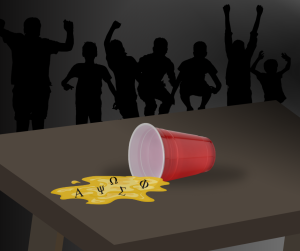The Orchestra Behind Titanic
An in-depth look at the orchestra behind the production Titanic
April 5, 2017
Musicians at Cherry Creek High School are working together to put on the musical, “Titanic,” this March.
Like with all musicals, the composition reflects the story and engage the audiences since the story is a historic event, the music reflects the era and mood throughout the show.

The chorus sits and waits for their turn to practice onstage with the orchestra.
The conductor of the pit orchestra, Mrs. Sara Wynes said, ”It begins really exuberant and joyful, like the story itself, because obviously it was so exciting when the Titanic launched, and so we hope to convey [to the audience] within the constraints of what the composer wrote.”
The music does a lot to express the mood and setting of the story, and like an author does with a book, the composer wrote upbeat phrasing to portray a joyful tone and then, when the events of the story change forlorn numbers depict the tragedy of it. More melancholy sounds mix with the upbeat manner to create the roller coaster of emotions that the composer wanted the audience to feel.
The overwhelming change in story progression couldn’t be conveyed without the instruments and unique sounds that add to the musical. Wynes understands that instrumentation is important, and said, “[this musical is] a little more unique. There’s two synthesised parts. One synthesiser heavily creates… harpsichord.. And then the other synthesised part is like orchestra sounding.”
The harpsichord sound is traditionally used for renaissance and Baroque music. It was the iconic sound of the 18th Century. When used in this musical, it creates emotional music that conveys the despair of the Titanic’s tragic crash.
The orchestra sound is classical and used for everything from ballet to incidental music; it can be used to create background music, or enhance the dynamics of the story.
What the student musicians take away from their experiences, and how they apply them to their own lives is one of the most important parts of the musical.
Mrs. Wynes said, “It’s the one experience as a high school student that really reflects a professional experience…”
The two hours of playing undertone music requires commitment and endurance, which is a skill that professional musicians have to use when playing for a living. The different styles of music and the tone also challenge the students. This helps them grow into better musicians and more experienced professionals. The different instruments allows the students to carry unique sounds to symphonies they might play in the future.


















